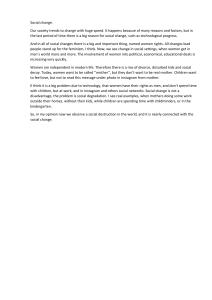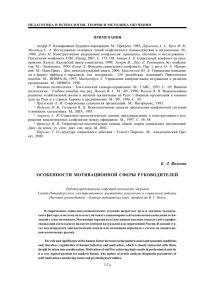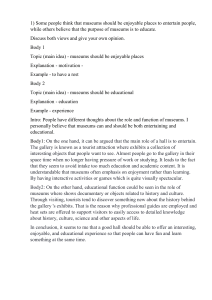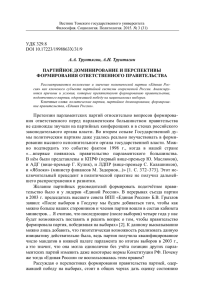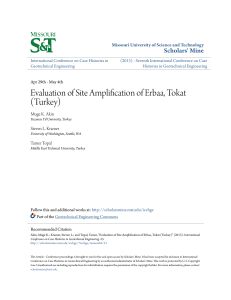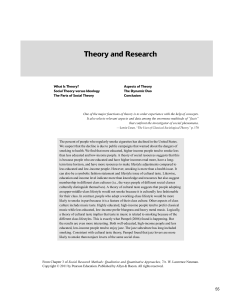Э. A. Илатовская ИНФОРМАЦИОННАЯ ПОЛИТИКА ОРГАНА
реклама
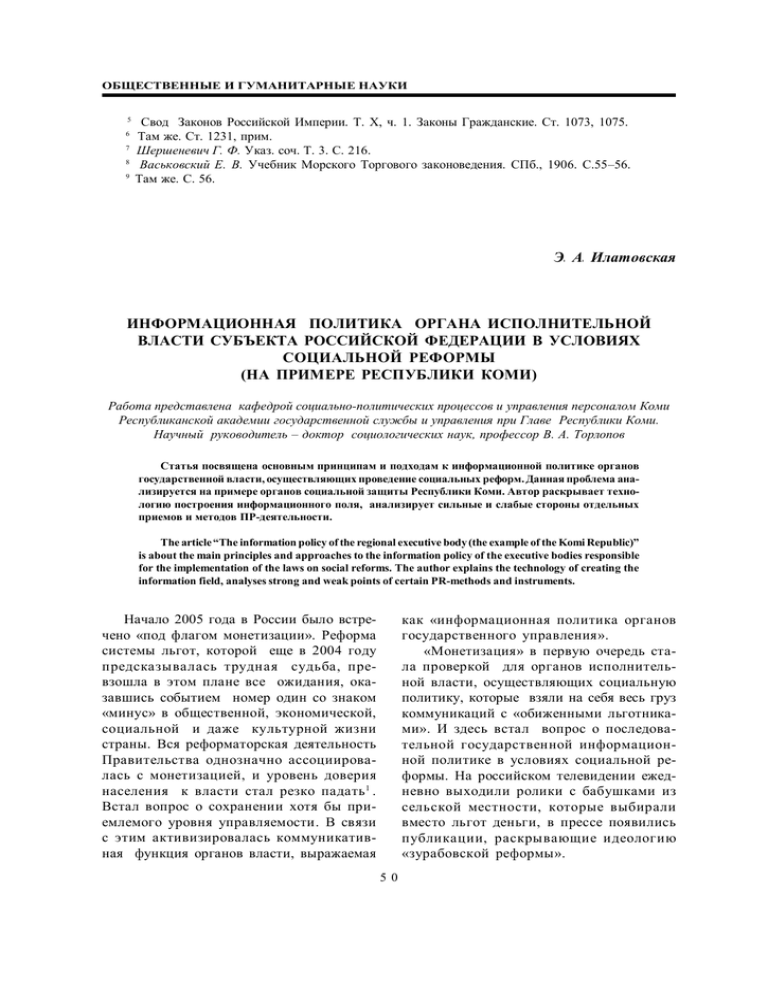
5 . 6 . . 1231, . . . . . . 56. 7 8 9 . . . X, . 1. . . 1073, 1075. . . 3. . 216. . ., 1906. .55–56. . . ) . – , . . , . - . , . The article “The information policy of the regional executive body (the example of the Komi Republic)” is about the main principles and approaches to the information policy of the executive bodies responsible for the implementation of the laws on social reforms. The author explains the technology of creating the information field, analyses strong and weak points of certain PR-methods and instruments. 2005 - « ». 2004 , , , « ». - » - « - , , » , , ». . , . 1 . - , , . - , , ». 50 ... » - - , – . , . 2000 (« - - . », « ») « . » 90- 2 - . - . . , 1998 . - , , . , , , , , . 2000 , , . . - , , ( , , conception – ) – , - PR - , , - ; 3 . . 4 . . 1 1234- ( ( , , ) 56- ) ( , , 789- ( 51 ) , , ) . 1, . - – . 7 . . - . . , - » - , . , . . , , 5 8 - . . , - - . 9 « » . . . , , , , . .). , , ( , , , , , . .) . – , - , . , , , , . , – ; , ; - 1) 2) , , 3) , , 10 . - . : . , , : - ) ) , ); , , - , , , ; , , ; ( - – , - ( : , . - ). , – , , - . 6 - . , 52 ... , , - - , ( , . , - ). – . , , , , , , ( , , - , , - , . ). – , – , - . – ( , , , . 602000 . , . ). - - , – . , 2000 - , , - , - . . , – . - - , , . – - . - – . , – - , , , . , 2000 - . , - , . . - . - - . . . ; 53 . – - , - , . . 1). 2 1 .1 . , - , , , ( - ; , : – - , ). , 1, , ( , ), – ; – , , , , . . , - , - . . , 2, , : – ( , , .), , - , – , , , – , , - , - , . ; , 54 - ... , . - 1200 . . - : 1+ 2 = . . . , , , , , , . ; , , : , - , , 2004 2002 61% , 30% – : - , 6,5% – . , « ; , ;« - », ?» , 100%) - , (43%). , (32%). , , , , . .). , : « - ?» . - (50,5%) 2000–2002 - , (32,5%) . , 2002 62% 1335 , , - (30,5%). , , 7% . , . , (63%) 11 . . . – 75,5% 2004 - - (21,5%) (24%). 55 . 61,5% . . (6 - 5,5% - . ). : 41% , 24,5% 16,5% . , - . . , , , , 2005 ., 809 32 , 40% , (10,5%), (7,5%)1 2. (46,5 ). (9,5%) , , - . . , 74% , 26% – . 13 . 2005 . . , - . « » - , , - ), 2,2 , 43% , ( ( 1). 120 100 80 60 40 20 0 1 2 3 4 1. 2005 . ( ) I , 2005 . « - – 56 – - ... », - - ( 2). 2. II . , 2005 . - - 2005 . ( 3). 3. III - 2005 . ( : 57 4). 4. 1 2005 . 2006 . – , - - ) , ( ) , - 14 . IV . 1 2005 . 17 830 ( (17%). 70% 2005 . ( 5). 5. 58 - ... , , 2005 . - , , - . - : , - . ; , ; - ; – ; , . . , - , 55% , . , , . , , , , , – - , - . . : « », , - », « : » (« », « ,« », . , « », », », . , « ). », . - . , . - , , - , . , 1 . 2 . 3 . . . 7 , 5–6, . ., , 2004. . . 59. . 180. « ». . 5 6 . . , 2006. 2001. . .4. . . 4 : ., 2005. . ., . . . . . : / ., 2004. . ., , . 48. . . 147. « 7–8. 59 », 8 9 . . . . . . . 146. / : 10 11 . ., . . : . . 48. . . ., , 2001. . 29. . . . , 2002. 12 . . .17–18. 13 2005 . ( . , 2004. « )». . 2005 . 14 2006 . . . . – – , . . , . , , , , , . , . , , , , . The article provides a clear introduction to feminism as one of the political ideologies that have dominated and shaped world politics of the last decades. The emergent ideology of feminism was a crosscutting ideology, encompassing, from the outset, three broad traditions: liberal feminism, Marxist or socialist feminism and radical feminism. A range of “common ground” themes can nevertheless be identified within feminism. The article analyses the most important of them – the public/private divide; partriarchy; sex and gender; equality and difference. 1960- - , . . , , , - . . , , 60 -
